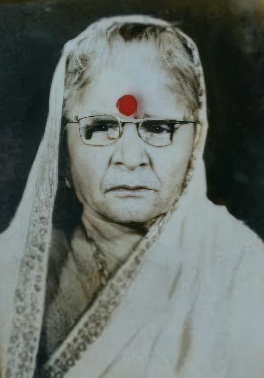Top Qs
Timeline
Chat
Perspective
Gangubai Kothewali
Indian sex worker and social activist (died 1977) From Wikipedia, the free encyclopedia
Remove ads
Gangubai Harjeevandas (1907 – 8 September 1977),[a] better known as Gangubai Kothewali[3][b] or Gangubai Kathiawadi,[3][c] was an Indian social activist, sex worker and madam of a brothel in the Kamathipura area of Mumbai during the 1960s. Gangubai worked for the rights of sex workers and for the well-being of orphans.[5] She gradually ended up operating her own brothel and is known to also have lobbied for the rights of commercial sex workers.[6]
Remove ads
Life
Summarize
Perspective
She was sold into prostitution aged 16, in 1923, by her suitor, Ramnik Lal, after running away from home to Bombay. She came to be known as the Madame of Kamathipura at the age of 25 in 1933, for being an influential pimp in the city with underworld connections, peddling drugs. Later in life (presumably around 1957), she met Jawaharlal Nehru to discuss the plight of sex workers and improve their living conditions.[7][8] Journalist Pamban Mu Prasanth noted in his article about her in BBC Tamil that a great deal of that is unsubstantiated.[9]
Mafia Queens of Mumbai (2011) by Hussain Zaidi contains information on the lives of thirteen women who influenced Mumbai. In it, Zaidi also gives information about Gangubai. According to this, Gangubai was from a highly educated family and was obsessed with working in films and was a fan of Dev Anand. At the age of 16, Gangubai fled to Mumbai with her 26-year-old suitor Ramnik Lal, where they got married. Within a few days of the marriage, her husband sold her in a kuntankhana (brothel) for ₹1,000. Reluctantly, Gangubai started working as a prostitute. In a short time, Gangubai became the head of some kuntankhanas. A goon named Shaukat Khan Pathan started exploiting her financially and physically. Gangubai approached Karim Lala, a prominent underworld don of that era, to lodge a complaint against Pathan. Lala assured her of help, and in return, she tied a rakhi (a sacred thread symbolizing brotherhood and protection) on his wrist. Following this, Lala personally warned and roughed up Shaukat Khan. As a result, Gangubai gained the protection of the underworld and earned widespread respect in Kamathipura.
Since then, Gangubai's repute as Karim Lala's supposed sister grew during the 1960s. St. Anthony's Girls' High School, which was established in Kamathipura in 1922, started a campaign to clean up the area from bad influence. This led to an order to move the brothel. Gangubai vehemently opposed this and effectively presented her case to the then Prime Minister Jawaharlal Nehru i.e. in 1957, and as a result, the brothel was not moved.[citation needed]
During this time Gangubai was also working for various issues of orphans and women in the prostitution business. Gangubai counseled and sent back many young women, who had fled their homes for working in films but forcefully brought into prostitution. For this reason, everyone used to respectfully call her as Gangubai Ganga Maa. After her death, her photographs and statues were erected in brothels of the area.[citation needed]
Remove ads
In popular culture
Her life was documented in the 2011 book, Mafia Queens of Mumbai, by writer and investigative journalist Hussain Zaidi.
The 2022 Indian Hindi-language film Gangubai Kathiawadi is based on the life of Gangubai Kothewali and a chapter of Zaidi's book, and directed by Sanjay Leela Bhansali with actress Alia Bhatt playing the titular character.[10][11]
Notes
- Indicating her origin from Kathiawar (Saurashtra) in western India.
References
Wikiwand - on
Seamless Wikipedia browsing. On steroids.
Remove ads

